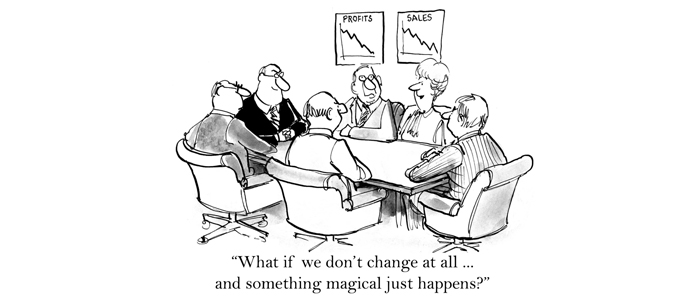Change is inevitable – for individuals, businesses, communities and nations. Your only choice is how you work with it – it’s as simple as that. We look at how to make change work for you and your business.
There are essentially two types of change:
- Attraction-based change – where you see a better future and pursue it.
- Crisis-based change – where some disaster befalls you and you have to change.
Attraction-based change is often thought of as risky. It requires courage to let go of something that is still working to pursue a new dream. But you can’t create something new without also creating the space for it to exist. However, courage alone runs the risk of recklessness. You also need to be sure that you’re doing the right things and you need the skills to ensure that you’re doing things right.
The key fact about change is that if you fail to apply attraction-based change, then you automatically and inevitably get the alternative – crisis-based change.
Everyone’s familiar with crisis-based change; where events overtake you and you lose flexibility of choice – whatever the situation, whether it is a relationship, a corporation or a system of government in a country. If you don’t have the courage, wisdom and skill to make the attraction-based change, then you’ll get the crisis-based change anyway.
To avoid the crisis, you need the sensitivity to detect the signs and the humility to listen to them. The early signs are often subtle, vague and difficult to quantify or prove. This can make it extremely difficult to persuade those who believe that they are succeeding with their current trajectory. However, you always have to remember that it can be hard to tell the difference between flying and falling until it is too late.
Thanks to Neil Crofts at www.neilcrofts.com
How do you embrace change in your business? If you want to aim for attractions-based change but find you only react to crisis-based change, then give us a call on 01865 881056 or email us at info@leaderslab.co.uk.
